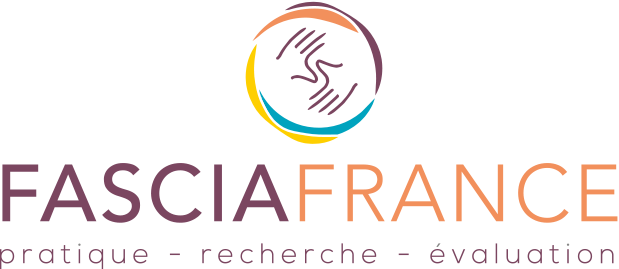Dr Bernard Payrau, cardiologue, Nadine Quéré, Marie Christine Payrau, E. Breton.
4th Fascia Research Congress (Reston, VA, USA), 2015.
Actes publiés par Kiener, éditeurs : Wearing, Schleip, Chaitow, Findley
BACKGROUND: Among the numerous nonpharmacological techniques available for coping with stress, some like hypnosis (1) gave strong evidence of efficiency, some others did not yet. In the field of fasciatherapy and reflexology, the earlier phases of qualitative (2,3), or pilot (4,5,6,7,8) research provided very pertinent information, but quantitative research on a large scale remained to be realized for providing a stronger evidence. The aim of this study is to statistically assess the effectiveness of these two methods in stress reduction, and to compare their performance to hypnosis, music therapy and nonintervention groups.
METHODS: 315 outpatients -average age 49- were enrolled in a prospective clinical open trial, carried out in multiple centers and operated by practitioners in the different techniques. According to the center the participants went to, they were exposed to a single session of either fasciatherapy (nb 88), reflexology (nb 79), hypnosis (nb 42), or music therapy (nb 64), or had a 30mn controlled resting condition (nb 42). Stress has been assessed just before (t0) and after (t1) each session using the STAI-Y inventory. MANOVA and MANCOVA were performed to assess and compare the effectiveness of each method on stress reduction.
RESULTS: A significant decrease of the stress level STAI-Y average was shown with fasciatherapy (40.7 to 26.8, p < 0.0001) and reflexology (43.8 to 27.9, p < 0.0001). Adjusted on the stress level in t0, fasciatherapy and reflexology were as effective as hypnosis, but were more effective than music therapy on the decrease of the stress level. A significant reduction of the stress level was found in the control group (38.1 to 31.7, p < 0.0001), but the gain was significantly lower in the control condition that in all other conditions.
CONCLUSION: This study provides for the first time statistical evidence of effectiveness of a single session of fasciatherapy and of reflexology in decreasing the stress level. A similar efficiency to hypnosis, grants to fasciatherapy and to reflexology the same rank of performance. Therefore, availability of several equivalent methods offers the opportunity of a tailored response to the stressed patients expecting a relief, as it already was shown for pregnant stressed women with a single session of several complementary therapies (9). Further studies should investigate effectiveness of fasciatherapy and reflexology in the management of stressful situations, ie. acute pain and especially in induced pain, and of long term treatments in chronic stress disorder, or on high blood pressure.
REFERENCES:
[x_icon type=”caret-right”] Spiegel H, Spiegel D. Trance and Treatment: Clinical Uses of Hypnosis. Washington, DC: American Psychiatric Press, 1987.
[x_icon type=”caret-right”] Angibaud, A. (2011). Le mal-être et la somatisation sous l’éclairage de la fasciathérapie. Mémoire de Mestrado (Master2) en Psychopédagogie perceptive, UFP, Porto, Portugal
[x_icon type=”caret-right”] Rosier P. (2013). La Fasciathérapie Méthode Danis Bois et la récupération du sportif de haut niveau. Thèse de Doctorat en Sciences Sociales, UFP, Porto, Portugal
[x_icon type=”caret-right”] Devulder C. (2008). Etude de l’efficacité d’une thérapie psychocorporelle dans le traitement de l’anorexie mentale. Mémoire pour le diplôme d’études spécialisées en psychiatrie. Université du droit et de la santé – Lille 2 ; Faculté de médecine Henri Warembourg.
[x_icon type=”caret-right”] Convard C. (2013). Fasciathérapie et anxiété sportive. Mémoire de Mestrado en Kinésithérapie Sportive, UFP, Porto, Portugal.
[x_icon type=”caret-right”] Quéré N, and all. Fasciatherapy combined with pulsology touch induces changes in blood turbulence potentially beneficial for vascular endothelium. J Bodyw Mov Ther. 2008.
[x_icon type=”caret-right”] Payrau B. (2009). Can fasciatherapy combined with pulsology touch improve blood pressure regulation of HBP patients? Post University Training Degree Dissertation. UFP, Porto, Portugal.
[x_icon type=”caret-right”] McVicar A.J., and all. Evaluation of anxiety, salivary cortisol and melatonin secretion following reflexology treatment: a pilot study in healthy individuals. Complement Ther Clin Pract. 2007 Aug;13(3):137-45.
[x_icon type=”caret-right”] Castronovo K. Reflexology and Panic Disorder. http://www.icr-reflexology.org/docs/Reflexology_and_Panic_Disorder.pdf; accessed July 10, 2015.
[x_icon type=”caret-right”] Newham, J.J., and all., State–trait anxiety inventory (STAI) scores during pregnancy following intervention with complementary therapies. Journal of Affective Disorders (2012).

